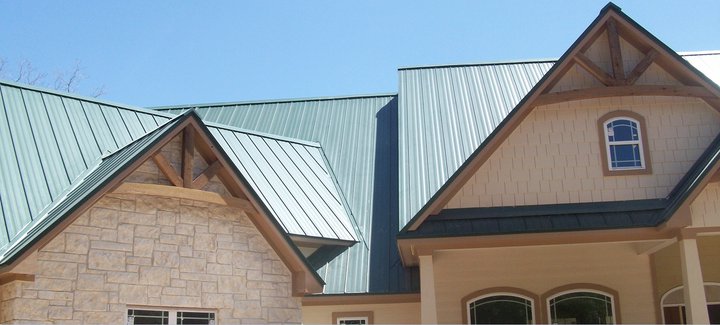 It used to be that buildings were constructed using corrugated iron as part of the building material. This was one of the least expensive, most durable, and environmentally friendly types of roofing at the start of the industrial age. Applying these same principles from the past, architects now prefer this type of material for residential, commercial, and industrial applications. Many roofing companies recommend and harness the versatility of this component because of its many benefits.
It used to be that buildings were constructed using corrugated iron as part of the building material. This was one of the least expensive, most durable, and environmentally friendly types of roofing at the start of the industrial age. Applying these same principles from the past, architects now prefer this type of material for residential, commercial, and industrial applications. Many roofing companies recommend and harness the versatility of this component because of its many benefits.
The resurgence of metal for use in homes and commercial buildings means that it is important to learn the basics about this housing component in order to make an informed decision about choosing the proper material for each particular need. Following are some popular choices in roofing material:
Asbestos
Asbestos cement was popular from the 1920’s through the 1960’s. This building covering was a combination of Portland cement and asbestos that was formed into a solid panel both fire-resistant and durable. Its service life is approximately 30 years; however, there are still some roofs that remain in good working condition after 50 years. It is important to keep in mind that during the demolition and replacement process of this type of covering, handling must be carefully taken due to the potential of associated health risks.
Fiber
Fiber Cement is made from polypropylene reinforcement strips mixed with the furrowed sheets. This fiber reinforcement is used in the construction of buildings because of its durability and strength. Because of the recent technological breakthroughs, this material now lasts longer and is even stronger. Aside from roofing, corrugated fiber cement is also used for cladding because of its functionality, better performance, and easy installation process. The main advantage of this product is that it is: cost-effective; corrosion and rust resistant; equipped with noise and thermal proofing properties; and low maintenance.
Duralita Cardboard Reinforcement
Duralita cardboard reinforcement cement is another type of alternative roofing material that is commonly used in both Central and North America. It is made of brightly colored reinforcement cement that looks like clay panels. The tile is installed using threaded bolts and rubber washers. The most popular and widely used type is lamina that is sold in straight sheets.
Fiberglass Sheets
Fiberglass sheets usually come in either flat or corrugated panels. Engineers and architects are very familiar with the benefits of this type of covering in building construction. Fiberglass sheets are very durable and often installed because of its translucent property, which allows bright light to be diffused throughout the building. This material must be securely fastened to prevent it from being stripped off by high winds.
Metal Panels
Metal panels are the most commonly used roofing material for domestic, agricultural, residential, and commercial buildings. Corrugated metal panels are strong, light-weight, easy to transport, practical and highly-resistant to a wide variety of weather conditions. This material is manufactured from either aluminum or steel.
Corrugation Process
The process that is used by manufacturers to shape this material into alternating grooves and ridges is known as roll forming. In the past, this process was done manually; however, with the latest technology that has enhanced production techniques, this process has become automated in order to decrease production and labor costs, resulting in increased efficiency. Making flat panels into corrugated sheets dramatically boosting both strength and run-off capability that allows rainwater, snow, and ice to easily be disbursed from the roof.
With the latest technological advancements, the quality of corrugated roofing materials has greatly improved. Panels are light, long lasting, and highly durable as well as very affordable and come in a variety of colors, sizes, patterns and designs. Before installing any building cover, it is important to learn the fundamentals of each option and consider all of the alternatives, keeping in mind the advantages of each type of material, warranty, and the overall cost.
Hopefully the above information has been helpful in understanding the basics about corrugated roofing material and its many choices and benefits!
Are you looking for a roof company Houston that will professionally install corrugated metal roofing on your residential or commercial building? Schulte Roofing of Navasota can help greater Houston area customers with all of their roofing needs!
